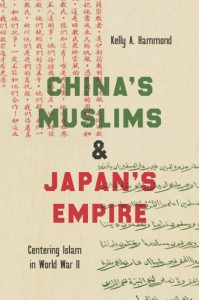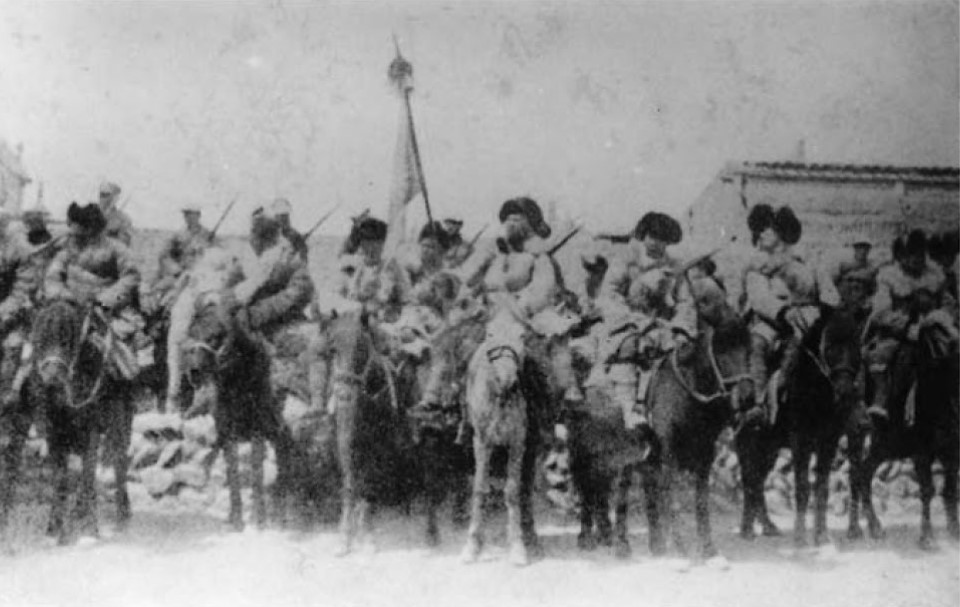China’s Muslims and Japan’s Empire
Kelly Hammond, China’s Muslims and Japan’s Empire: Centering Islam in World War II, Chapel Hill, NC: University of North Carolina Press, 2020.
 At its peak in 1942, the Japanese Empire stretched across East and Southeast Asia, covering a vast territory with a substantial Muslim population. Yet historical accounts of Japanese imperial policies during World War II typically neglect Japan’s engagement with Islam. In China’s Muslims and Japans’ Empire, Kelly A. Hammond brings Sino-Muslims—Muslims living in China—to the fore, highlighting this understudied population’s important role in Japan’s wartime strategies and ambitious vision for a postwar order.
At its peak in 1942, the Japanese Empire stretched across East and Southeast Asia, covering a vast territory with a substantial Muslim population. Yet historical accounts of Japanese imperial policies during World War II typically neglect Japan’s engagement with Islam. In China’s Muslims and Japans’ Empire, Kelly A. Hammond brings Sino-Muslims—Muslims living in China—to the fore, highlighting this understudied population’s important role in Japan’s wartime strategies and ambitious vision for a postwar order.
Hammond argues that Sino-Muslims were central to the Japanese Empire’s war efforts. Not only did Japan vie for their support to undermine the Chinese Nationalists, but, more importantly, it hoped to win their loyalty to cultivate connections with a broader network of Muslims beyond its borders. As Japan designed strategies to expand its global influence after the war, it imagined that Sino-Muslims would act as intermediaries, conducting outreach campaigns among fellow Muslims to develop new consumer bases and subvert Western capitalism and Soviet communism. To accomplish these goals, Japan launched a diverse set of policies aimed at attracting Sino-Muslims, from redesigning school curricula to providing funding for Muslims to study in Tokyo and perform the hajj.
China’s Muslims and Japan’s Empire offers a comprehensive account of Japanese policies, Chinese Nationalist responses, and, crucially, Sino-Muslim attempts to negotiate their relationship with the imperial power. In doing so, Hammond both uncovers an overlooked aspect of WWII history and reconceptualizes how Sino-Muslims fit into the wider dynamics of twentieth-century Islamic politics. Her transnational account also challenges traditional spatial boundaries by making a “peripheral” population central to the story while demonstrating that the Japanese imperial space was not confined by neatly demarcated borders.
Hammond’s use of archival materials is masterful; her book draws on sources written in five languages, from seven different countries. She enriches the text with photographs, maps, and even reproductions of daily schedules from Muslim schools in occupied China. Particularly revealing is a Japanese-produced map of the global distribution of Muslims, which showcases the Empire’s ambitions to expand its geopolitical and commercial power throughout the Muslim world.
Perhaps the greatest success of China’s Muslims and Japan’s Empire lies in its ability to give voice to Sino-Muslim individuals, emphasizing the agency they exercised in their interactions with Japan. Though they were constrained by their position as a minority population in an occupied territory, Sino-Muslims were independent actors who pursued their own interests. They navigated multiple, overlapping identities as imperial subjects, residents of Northern China, and members of the wider Muslim umma. Further, Japanese-backed Sino-Muslims were far from a monolith; their views differed on everything from Japanese language instruction in schools to their relationship with Muslims supported by the Chinese Nationalists. Hammond accentuates this diversity in her accounts of Sino-Muslim debates over Japan’s efforts to implement reforms that prioritized Japanese over Arabic in school curricula.
This reality complicates the current Chinese government’s narrative of a cohesive Chinese resistance to Japanese occupation. It suggests that the notion of “collaboration” (a controversial term with a pejorative connotation) deserves a closer look. “[Sino-Muslim] men and women were not simply ‘susceptible’ to Japanese propaganda efforts to win their hearts and minds,” writes Hammond. “In the end, Muslims worked with the Japanese Empire for a variety of reasons, and they did it because they benefited directly” (p.16).
Beyond Japanese support for Muslim schools in occupied China, Sino-Muslims benefited from imperial Japan’s policy of funding mosques, scholarships, and hajj trips. Hammond’s detailed description of the journey of five Sino-Muslims to Saudi Arabia in 1937 illustrates the ambivalence many individuals felt about their relationship to Japan. Although they enjoyed a free hajj, they were frustrated by the suspicion they aroused because of their connection to the Empire. They also developed an unlikely friendship with another Sino-Muslim group that the Chinese Nationalists had sent to spy on them. In many ways, Hammond writes, the group identified more with their Northern Chinese identity than with their Muslim identity. For example, they missed Beijing-style cuisine and derided South Asian Muslims’ custom of eating with their hands.
What makes Hammond’s account of these Sino-Muslim hajjis so compelling is its rich detail. She draws extensively from the diary of the group’s leader, Tang Yichen, who chronicled his impressions throughout the journey. Through Tang’s eyes, we learn about the difficulty of securing visas, the hot weather, the bloodthirsty mosquitoes, and the joy of slurping up a bowl of beef noodle soup after finally returning home. At one point, Tang burns himself while boiling tea in a hotel room. “If we can’t even make tea for ourselves, how will we ever get to Mecca?” he wonders (p.131).
Integrating these individual stories into overarching historical and geopolitical trends is a challenge, as Hammond rightly points out. China’s Muslims and Japan’s Empire deftly navigates this balancing act. The final chapter compares Japan’s policies directed at Muslims with the strategies of the other major Axis powers: fascist Italy and Nazi Germany. In particular, it outlines how all three invented historical connections with the Muslim world to justify their outreach efforts. Hammond focuses on Afghanistan as “the locus of wartime geopolitical maneuverings in Asia between the Axis and Allies” (p.203). This chapter’s connection to Sino-Muslims is more tenuous. Although it may seem tangential to the rest of the book, it is useful in contextualizing the Sino-Muslim case within the broader theme of Axis powers’ attempts to engage with Muslims.
Hammond concludes the book by acknowledging the contemporary significance of her research. Against the backdrop of China’s violent repression of its Uyghur population, elevating the voices of the country’s Muslim minorities is critical. In the wake of the Axis’ defeat in 1945, communist China “resurrected, repackaged, and redeployed” many elements of the policies Japan had directed toward Sino-Muslims (p.221). Today, the Chinese government continues to appropriate its Muslim heritage to cultivate ties with the Muslim world, even as it systematically represses Muslims within its borders. The contradictions could not be more stark—or appalling.
Isabelle DeSisto is an MPhil candidate in Politics and International Studies at Trinity College, University of Cambridge. Her research focuses on the intersection of comparative politics and international relations, with a focus on Eurasia and Latin America. She holds a MA in Regional Studies: Russia, Eastern Europe, and Central Asia from Harvard University. Follow her on Twitter @isadesis.

